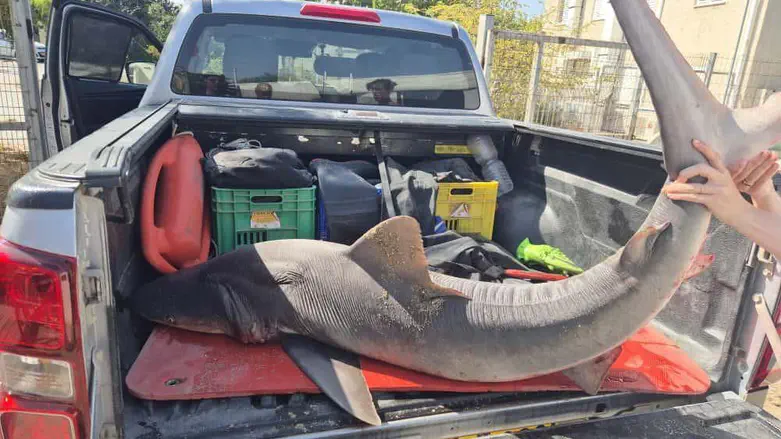A female sandbar shark (Carcharhinus plumbeus) was found dead last weekend after becoming entangled in fishing gear off the coast of Jisr az-Zarqa, south of Haifa.
The carcass was transferred for a scientific necropsy as part of ongoing research conducted by the Morris Kahn Marine Research Station, affiliated with the Charney School of Marine Sciences at the University of Haifa.
Ilya Baskin, a marine inspector with the Israel Nature and Parks Authority, said he received a report last Thursday from a local fisherman about a shark that had been caught in a “sharak”-type sinking longline. “The fisherman asked whether to deliver the shark to me or return it to the sea,” Baskin said. “I collected the carcass of the sandbar shark, which is a protected species, from the marina and handed it over to researchers for examination.”
Dr. Aviad Scheinin, head of the Apex Predators Research Program at the station, explained that “in previous cases where we examined sharks and dolphins caught in fishing gear, we sometimes found signs of illness or weakness that may have contributed to their capture. Therefore, a full necropsy was also performed in this case.”
The necropsy was carried out by Dr. Danny Morick, head of pathology at the station, together with Dr. Scheinin, at the Apex Predator Laboratory in Ashdod. The examination revealed that the shark was a mature female measuring about two meters in length. An ultrasound scan conducted by Dr. Lee Livne, a researcher specializing in shark reproduction, confirmed that the female was not pregnant.
“Sharks of this species typically give birth in July and mate during May-June,” Dr. Livne explained. “They have a biennial reproductive cycle. It is likely that this female gave birth last summer and is currently in a resting phase, developing follicles ahead of the next mating season.” She added that the size of the follicles found during the necropsy supports this assumption.
Dr. Livne noted that this is only the second time evidence has been gathered confirming the biennial reproductive cycle of this species along Israel’s coastline. “In March I examined another female, nicknamed Romi, who appeared to be carrying well-developed embryos-indicating she probably gave birth in July as well,” she said.
According to the findings, the shark appeared to be in good health. However, a fishing hook was found lodged in its body.

